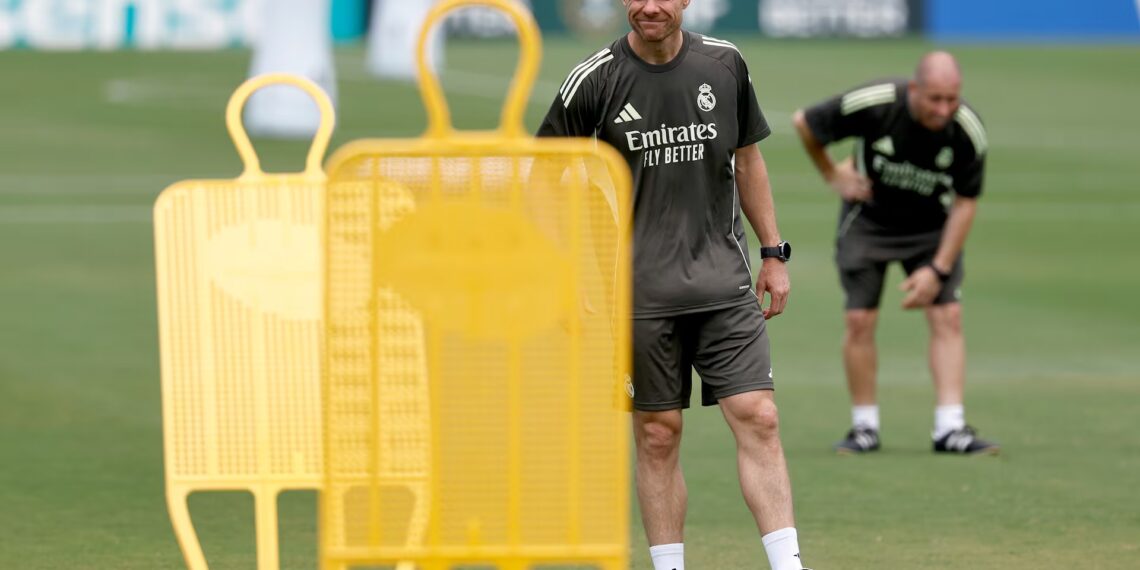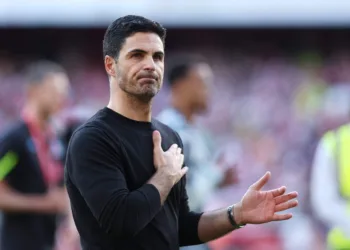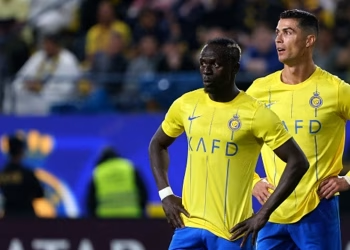Real Madrid has initiated a comprehensive restructuring of its medical department following one of the most injury-plagued seasons in the club’s recent history. The Los Blancos hierarchy, with new manager Xabi Alonso’s full approval, has completely overhauled their medical team after recording a staggering 51 injuries during the 2024-25 campaign, leaving Carlo Ancelotti’s squad decimated for large portions of what became a disappointing season by the club’s astronomical standards.
Table of Contents
The Injury Crisis That Forced Change
The 2024-25 season will be remembered at the Santiago Bernabeu not for glory, but for an unprecedented injury epidemic that systematically dismantled Real Madrid’s defensive structure.
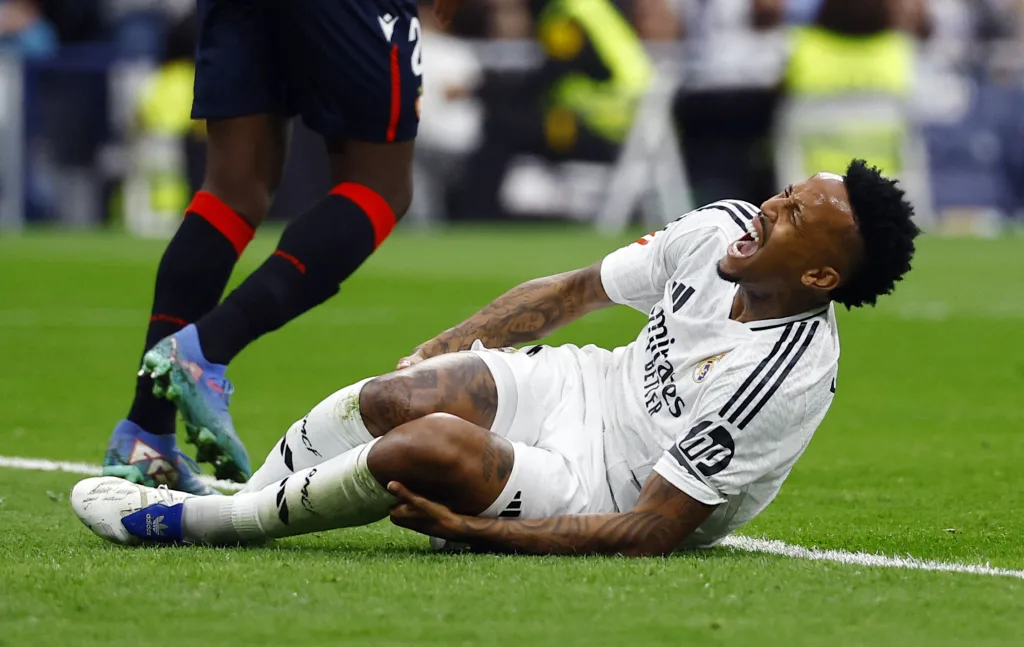
The club suffered 25 documented major injuries, with their entire starting back four unavailable by May 2025, creating a crisis that ultimately cost them dearly in multiple competitions.
Real Madrid’s Injury Crisis by Position (2024-25)
| Position | Players Affected | Total Injuries | Season-Ending | Impact Level |
|---|---|---|---|---|
| Defenders | 8 players | 18 injuries | 5 injuries | Critical |
| Midfielders | 6 players | 15 injuries | 2 injuries | High |
| Forwards | 5 players | 12 injuries | 1 injury | Medium |
| Goalkeepers | 2 players | 6 injuries | 0 injuries | Low |
The defensive carnage began early and never relented. Dani Carvajal suffered a devastating ACL, LCL, and posterolateral corner injury to his right knee in October 2024 against Villarreal. Just one month later, Eder Militao tore his ACL against Osasuna – his second such injury in consecutive seasons, leaving Real Madrid with virtually no recognized center-backs.
David Alaba’s situation proved even more complex. The Austrian defender, who had already been struggling with an ACL injury from December 2023, suffered multiple setbacks during his recovery before sustaining a ruptured internal meniscus in his left knee during the Copa del Rey final, requiring additional surgery.
Real Madrid’s 2024-25 Injury Toll
| Player | Injury Type | Occurrence | Recovery Time | Impact |
|---|---|---|---|---|
| Dani Carvajal | ACL/LCL tear | October 2024 | 8-10 months | Season-ending |
| Eder Militao | ACL tear (2nd) | November 2024 | 9-12 months | Season-ending |
| David Alaba | ACL + Meniscus | Multiple setbacks | 12+ months | Extended absence |
| Ferland Mendy | Ruptured quadriceps | Copa del Rey final | 3-4 months | Season-ending |
| Antonio Rudiger | Meniscus tear | May 2025 | 2-3 months | Surgery required |
Felipe Segura Takes Control: The New Medical Revolution
In response to this crisis, Real Madrid has placed Dr. Felipe Segura at the helm of a completely restructured medical department. Segura, who joined the club in 2021 from Granada, now has full autonomy over staff management and salary negotiations, marking a significant shift in the club’s approach to player health management.
According to reports from Alberto Pereiro of Onda Cero, Real Madrid “have parted ways with most of the previous staff and replaced them with new physios who have experience working at clubs including Barcelona, Real Betis, Granada and Malaga.” This represents an almost complete purge of the existing medical infrastructure.
The club has brought in Manuel Arroyo, a highly regarded doctor from Granada, to work alongside Segura. However, established doctors Daniel Rosado and Jaime Abascal are not expected to remain with the first team, signaling the comprehensive nature of this overhaul.
New Medical Team Structure
| Role | Name | Previous Club | Specialization |
|---|---|---|---|
| Head of Medical | Felipe Segura | Granada | Sports Medicine & Prevention |
| Senior Doctor | Manuel Arroyo | Granada | Orthopedic Medicine |
| Physiotherapy Team | Multiple Staff | Barcelona/Betis/Malaga | Rehabilitation & Recovery |
| Sports Scientists | New Appointments | Various | Biomechanics & Analytics |
Strategic Recruitment from Rival Clubs
Real Madrid’s new medical team reflects a strategic approach to recruitment, drawing expertise from across Spanish football. The club has specifically targeted professionals with experience at:
- FC Barcelona: Bringing insights from their historic rivals
- Real Betis: Known for effective injury management
- Granada: Segura’s former club with proven methodologies
- Malaga: Additional physiotherapy expertise
This cross-pollination of medical knowledge represents Real Madrid’s determination to learn from the best practices across La Liga, regardless of traditional rivalries.
Xabi Alonso’s Endorsement and New Philosophy
The timing of this medical overhaul coincides perfectly with Xabi Alonso’s appointment as head coach. Reports confirm that the sporting management “with Xabi Alonso’s approval, has carried out a virtually total purge of the medical staff.” This suggests a cohesive vision between the new coaching regime and medical department.
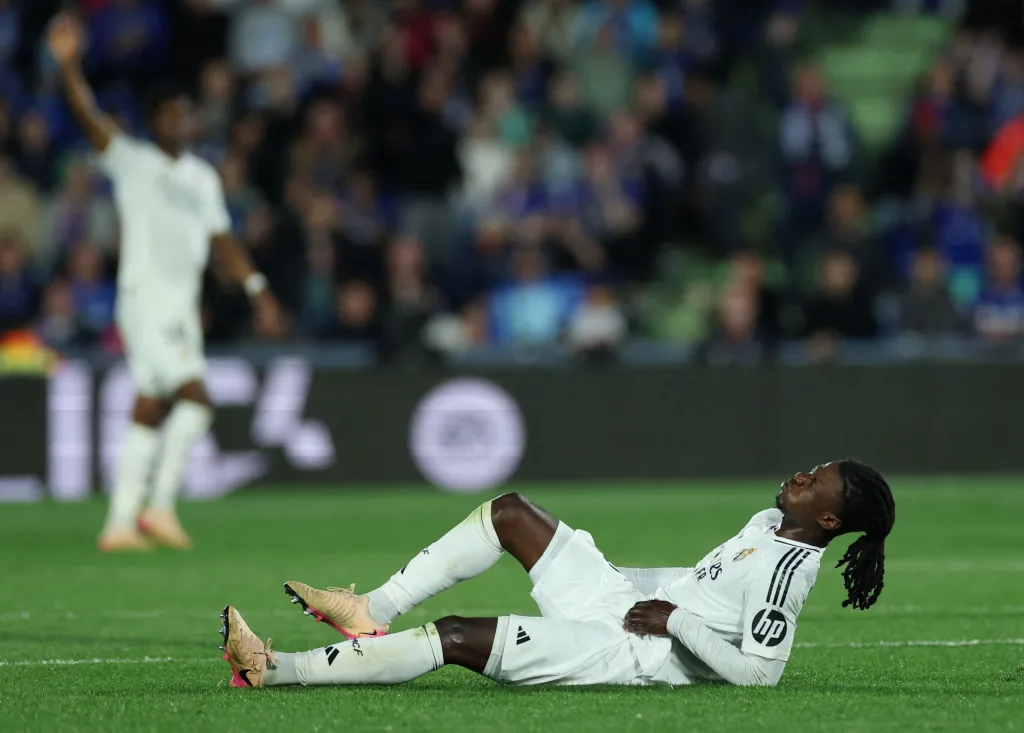
Alonso’s background as a former player who experienced various injury challenges during his career makes his input particularly valuable. The new medical team will be “responsible for the overall fitness of players and ensuring a speedy recovery for all players sidelined through setbacks.”
The Financial and Strategic Impact
The injury crisis of 2024-25 didn’t just affect team performance – it had severe strategic implications. Real Madrid’s Champions League quarter-final exit to Arsenal, combined with Copa del Rey and Spanish Super Cup final losses to Barcelona, can be directly attributed to their inability to field consistent lineups due to medical problems.
The club’s decision to reduce reliance on external medical providers like Sanitas represents a move toward greater internal autonomy. This approach aims to prevent situations where players like Luka Modric, Cristiano Ronaldo (during his tenure), and Karim Benzema sought treatment outside the club’s medical infrastructure.
Comparative Injury Statistics
| Season | Total Injuries | Major Injuries | Defensive Injuries | Games Missed |
|---|---|---|---|---|
| 2023-24 | 34 | 8 | 12 | 245 |
| 2024-25 | 51 | 25 | 18 | 387 |
| Average (5 years) | 28 | 6 | 8 | 198 |
Comparative Injury Statistics
| Season | Total Injuries | Major Injuries | Defensive Injuries | Games Missed |
|---|---|---|---|---|
| 2023-24 | 34 | 8 | 12 | 245 |
| 2024-25 | 51 | 25 | 18 | 387 |
| Average (5 years) | 28 | 6 | 8 | 198 |
Prevention-Focused Methodology
The new medical team’s primary mandate centers on injury prevention rather than reactive treatment. Dr. Segura, who leads the master’s program in medicine and sports sciences at the Real Madrid-Universidad Europea University School, brings an academic approach to practical application.
“Greater control, prevention, and efficiency in the recovery of injured players” represents the core philosophy of this new era. The medical team will implement:
- Personalized fitness monitoring for each player
- Advanced biomechanical analysis to prevent recurring injuries
- Integrated rehabilitation programs combining physical and psychological support
- Workload management tailored to individual player needs
The Alaba, Militao, and Carvajal Challenge
The new medical team faces immediate challenges with the trio of defensive stalwarts who suffered season-ending injuries. Medical experts suggest:
Dani Carvajal: Expected to return to full fitness by early 2025-26 season, though at 33, careful management will be crucial.
Eder Militao: Having suffered bilateral ACL injuries, the Brazilian requires “deep scrutiny with regards to movement patterns and fitness levels” to prevent re-injury.
David Alaba: Multiple setbacks suggest his case requires the most cautious approach, with no definitive return timeline established.
Early Results and Expectations
Real Madrid resumed training on August 4, 2025, with the new medical staff already in place. The club’s pre-season schedule includes a confirmed friendly against WSG Tirol on August 12 in Innsbruck, providing the first opportunity to assess the new medical protocols.
The success of this overhaul will be measured not in immediate results, but in sustained player availability throughout the demanding 2025-26 campaign. With Real Madrid competing in La Liga, Champions League, Copa del Rey, and Supercopa de España, the medical team’s effectiveness will be thoroughly tested.
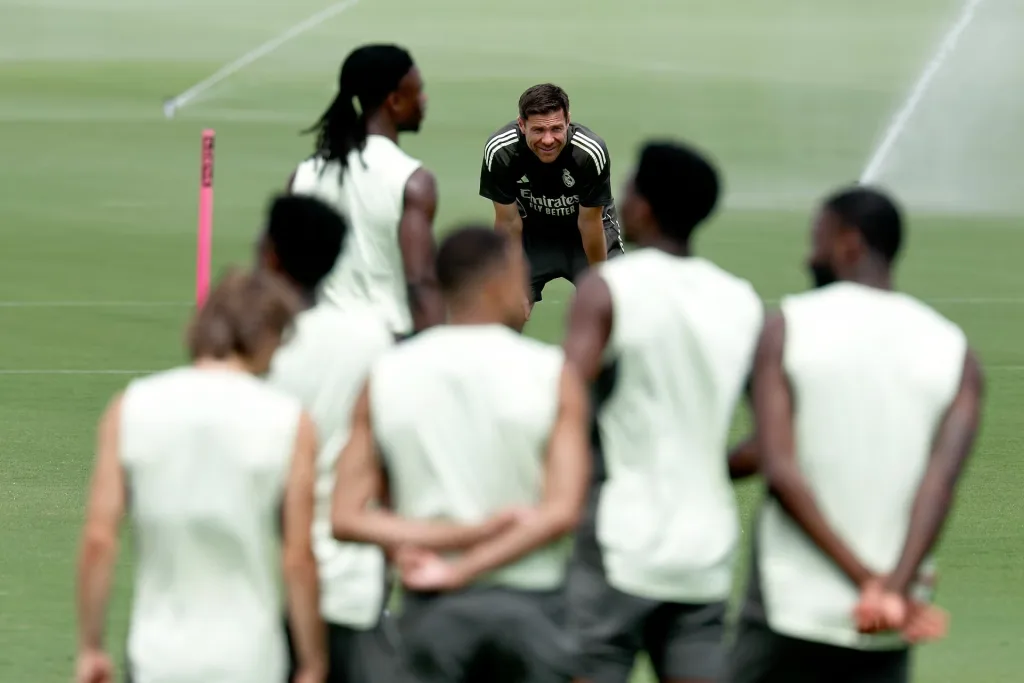
Real Madrid’s complete medical team overhaul represents more than just personnel changes – it signals a fundamental shift in the club’s approach to player health management. After a catastrophic 2024-25 season that saw 51 injuries decimate their squad, the appointment of Felipe Segura and recruitment of experienced professionals from rival clubs demonstrates the hierarchy’s commitment to preventing future medical disasters. With Xabi Alonso’s endorsement and a prevention-focused methodology, this new medical team faces the immense challenge of keeping Real Madrid’s stars healthy during another grueling campaign. The success of this revolution will ultimately determine whether Los Blancos can return to their position at European football’s summit.
FAQs
Why did Real Madrid completely change their medical team?
Real Madrid recorded 51 injuries during the 2024-25 season, including season-ending ACL injuries to key defenders Carvajal, Militao, and Alaba. The injury crisis left them without their entire starting back four and contributed to disappointing results across all competitions.
Who is leading Real Madrid’s new medical team?
Dr. Felipe Segura, who joined from Granada in 2021, now has complete control over the medical department including staff management and salary negotiations. He’s joined by Manuel Arroyo, another doctor from Granada.
Where did Real Madrid recruit their new medical staff from?
The new medical team includes professionals with experience at Barcelona, Real Betis, Granada, and Malaga, representing a strategic cross-pollination of medical knowledge from across Spanish football.
Did Xabi Alonso approve these medical team changes?
Yes, reports confirm that the sporting management made these changes “with Xabi Alonso’s approval,” indicating full support from the new head coach for the medical overhaul.
When will we see if the new medical team is successful?
The new medical team is already in place for the 2025-26 season, but their success will be measured over time based on injury prevention, player availability, and recovery efficiency throughout the demanding campaign ahead.

